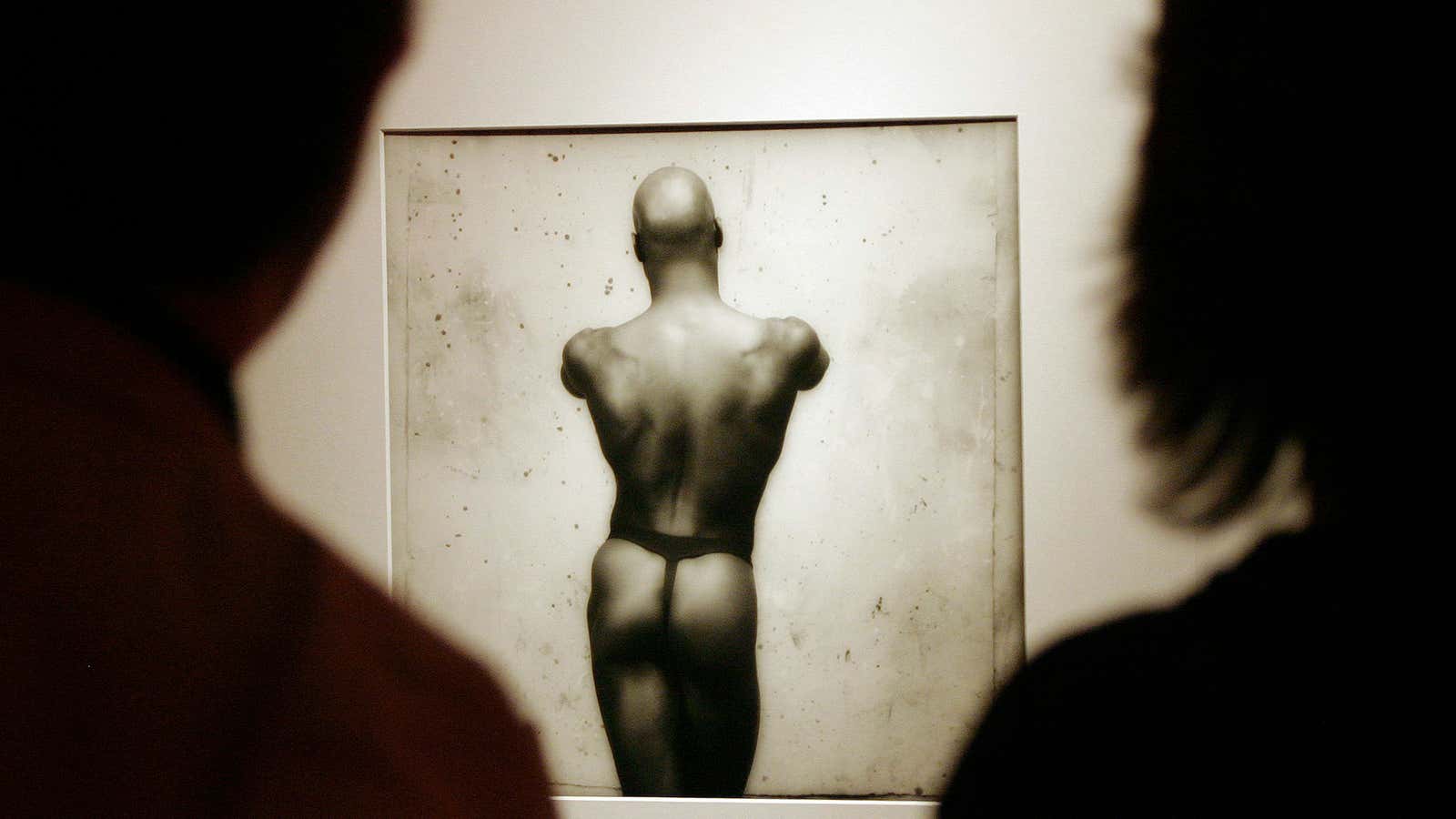In 1983, six years before the artist and photographer Robert Mapplethorpe died at 42, due to complications from HIV/AIDS, the New York Times’ art critic wondered: “Is Mapplethorpe only out to shock?” His frankly homoerotic work was “undeniably and intentionally distasteful,” wrote Andy Grundberg, now a professor of arts and design at George Washington University. “The norms of polite nudity are transgressed; religious, racial and sexual taboos are flouted; a kind of chic, narcissistic exhibitionism is flaunted.”
The works in question—including the artist’s self-portrait with a bullwhip in his anus and a photograph of a man urinating in another man’s mouth—sparked nationwide protests, letter-writing campaigns, and even a court case.
But 35 years on, the photographer and his work appear to have been fully absorbed into the art establishment. His prints sell for hundreds of thousands of dollars; his work is in the collections of the world’s largest and most established museums; the Dutch electronics company Philips even released a disc of his pictures of flowers for its 1990s interactive multimedia CD player.
So it felt like a throwback when, last week, a new Mapplethorpe censorship scandal emerged. This one followed the opening of an exhibition of over 150 of his works at Serralves Museum of Contemporary Art in Porto, Portugal—and it ended with the resignation of one of the country’s greatest curatorial stars.
João Ribas, the museum’s artistic director, had put together an exhibition of 179 works from the photographer’s series of New York’s BDSM scene in the 1970s. When it opened, he told the Portuguese daily newspaper Público, there were just 159 works in the show—and that sections of the exhibition had been restricted from visitors aged 18 and under, over his objections.
He had agreed to warn visitors about the explicit photos, he said, but not to restrict access to any of them. “A museum cannot condition, separate, or delist access to works, to say what people can see or not,” he told Público. Ribas has now left his post as artistic director over the controversy after just eight months in the role, telling Público he is “no longer able to continue to lead the institution.”
An open letter from over 400 art world big hitters has since emerged online, denouncing the museum’s decision “to succumb to moral puritanism and social conservatism” within a political context of “right-wing populism, ultranationalism, and threats to artistic and academic freedoms.” The letter is addressed to Ana Pinho, president of the Serralves Foundation, and signed by such luminaries as MoMA chief curator Stuart Comer and the Turner Prize-winning artist and designer Wolfgang Tillmans.
For their part, the museum and foundation deny that they are responsible for any censorship. In a statement to the Spanish newspaper El País, the Serralves Foundation explained that limiting access to the dozen or so explicit photographs in the exhibition was necessary—and had been planned from when the show was first proposed—because of Portuguese pornography laws. The authors of the letter dispute this explanation, citing many other works in the museum’s collection and Western historical canon which they say are also “erotic and/or sexually-explicit.”
The Mapplethorpe Foundation, however, seemed relatively unperturbed. In a statement to ARTnews, a spokesperson said it did not perceive the restrictive signs as censorship, and added that “we try not to interfere with any curatorial decisions nor with any museum’s internal issues.”
